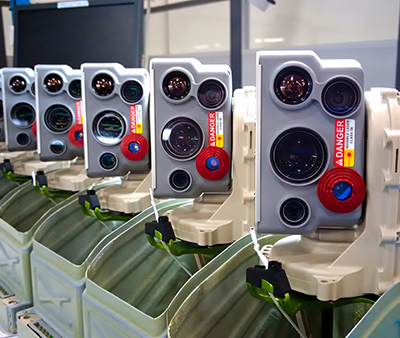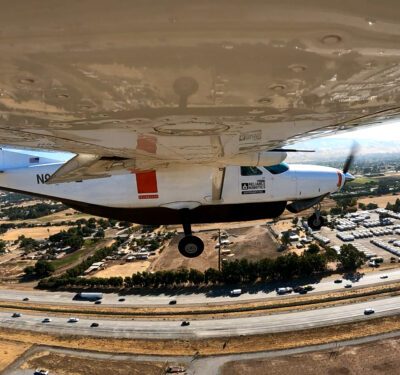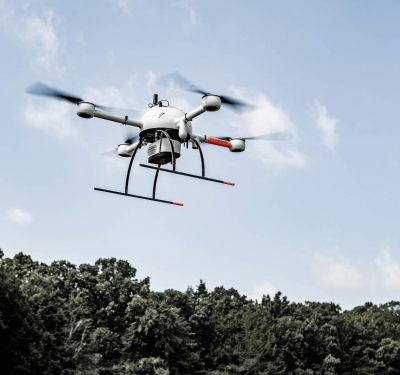Drones may become a key tool for reaching homeless Californians camped in hard-to-reach areas with information about how to avoid getting sick from the coronavirus and how to access health resources if they do fall ill.
With the virus spreading across the country the Chula Vista Police Department (CVPD) is considering whether to use unmanned aircraft equipped with speakers as a tool for communicating with people who might not know about the pandemic.
“We have large, very broad and expansive urban canyons throughout our city and, unfortunately, there are unsheltered people and encampments of homeless people that are living in these canyons,” said Vern Sallee, the captain in charge of the police department’s operations division.
“They are particularly vulnerable as a population to this virus because they’re not in the best of living conditions and the governor of California has actually directed emergency orders to establish shelters for these folks. And so we’re trying to think how can we get the word out to people who don’t have normal means of communication and interaction in our community. How do we reach them to let them know that there is shelter available? How do we reach them to let them know about the dangers of the virus, to at least express to them to keep social distancing?”
The CVPD has been dispatching drones ahead of police to scout out emergencies and support law enforcement as part of its drone-as-a-first-responder program. The drone’s remote operator is often able to get eyes on the scene more quickly than traffic-hampered officers and, being a trained police officer, can assess if a reported incident has been resolved, if a suspect is armed or if a seemingly low-priority call is actually a dangerous situation.
The effort is part of the Federal Aviation Administration’s Integration Pilot Program, a nationwide effort to test drone applications in the real world as a step toward practical rules and integration into the National Airspace.
The Chula Vista PD had not yet decided to deploy its drones to warn about the virus as of press time. There are other options, including using helicopters with speakers or sending in officers, said Sallee. However, drones are far more cost effective than helicopters, he said, and less of a drain on resources of other agencies. It’s also safer to use drones during a time when person-to-person contact increases the risk of spreading the virus.
“I really don’t have the resources, nor would it be safe, to send police officers on foot to search canyons for homeless encampments to personally talk to people — especially during this time,” said Sallee.
It is for these same reasons that the department is also considering using drones to alert people who are congregating in the city’s now-closed parks.
If the police do choose to use drones to communicate with people, Sallee said, “we would work closely with FAA to ensure that we followed all of their regulatory structure as well as the recommendations on how to do such flights safely.”
The CVPD would also take care to be transparent and respectful of people’s constitutional rights, Sallee told Inside Unmanned Systems. “Every aspect of our drone program is tailored with the first thought of people’s constitutional rights in mind, as well as their constitutional right to privacy, freedom to assemble, freedom to move about our city.”
Salle said his department is aware that people can see the police’s use of drones as overbearing issue.
“We are very cognizant of that,” Sallee said. “We are looking at this technology for the public good to communicate in areas that otherwise would be very difficult for us.”






